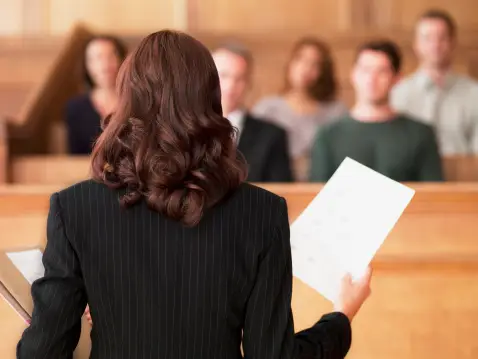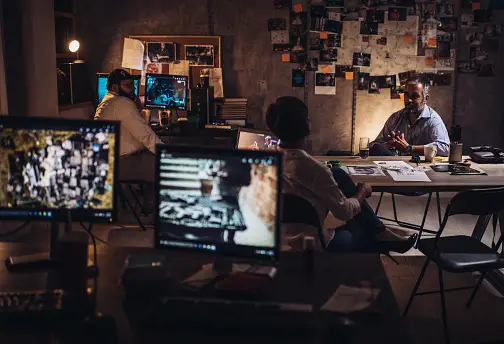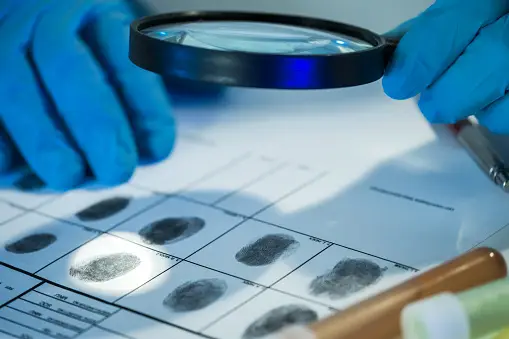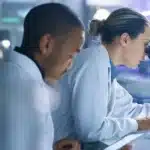Welcome to the complex and fascinating world of legal proceedings, where evidence exhibits play a pivotal role. Firstly, we delve into the crucial importance of persuasive evidence in courtroom dramas, highlighting its significance and exploring effective ways to present a compelling case. Secondly, join us as we navigate through the intricate layers of evidence, ultimately revealing how these exhibits are instrumental in shaping the narrative of justice.
What Constitutes Evidence Exhibits In Court?
Evidence exhibited in a courtroom setting is not just an element of procedural formality; it is a dynamic tool that breathes life into legal narratives, providing a nuanced understanding of facts and events. These exhibits come in diverse forms, ranging from tangible physical items to meticulously documented papers and multimedia presentations.
Documentary Evidence:
At the heart of evidence exhibits lies documentary evidence, a broad category encompassing written or recorded materials that aim to support, refute, or clarify legal arguments. Contracts, emails, letters, photographs, and financial records are common examples. The admissibility of such documents is contingent upon factors like authenticity, relevance, and the potential for bias. Witnesses or experts often authenticate these documents, vouching for their credibility before the court.
Physical Evidence:
In criminal and civil cases alike, physical evidence takes center stage as tangible artifacts that can significantly impact the trajectory of legal proceedings. Weapons, clothing, and forensic samples such as blood or fingerprints are meticulously handled and presented in court. The chain of custody, a meticulous record of the handling of physical evidence, is crucial to establish its integrity and admissibility. Expert witnesses may be summoned to elucidate the significance of these items, translating their scientific complexity for the court.
Demonstrative Evidence:
To bridge the gap between complexity and comprehension, attorneys often resort to demonstrative evidence. This category includes visual aids such as charts, graphs, timelines, models, or multimedia presentations. The aim is to offer a visual narrative that enhances understanding and reinforces key points. With advancements in technology, courtroom presentations now extend to animations, simulations, and virtual reconstructions, providing a more immersive experience for judges and jurors.

Testimonial Evidence:
While witnesses themselves are not exhibits, their testimony is a crucial form of evidence. Witness statements, whether providing firsthand accounts or expert opinions, contribute significantly to the legal narrative. Attorneys strategically use direct examination to present information favoring their case and cross-examination to challenge opposing testimony. The credibility and reliability of witnesses become pivotal factors in determining the weight assigned to their statements.
Authentication and Admissibility:
For evidence exhibits to wield influence in court, they must undergo scrutiny in terms of authentication and admissibility. Authenticity ensures that the evidence is indeed what it purports to be, while admissibility determines whether it aligns with legal standards. The application of rules of evidence becomes paramount in this context, often necessitating the involvement of witnesses, experts, or foundational documents to establish the credibility of the exhibits.
Challenges and Objections:
The courtroom arena is not devoid of challenges and objections concerning the admission of evidence exhibits. Attorneys may raise objections based on relevance, hearsay, or improper authentication. Judges play a pivotal role in evaluating these objections, drawing upon legal principles and precedents to determine whether the evidence in question can be presented to the jury.
Technology’s Role in Evidence Presentation:
In the contemporary legal landscape, technology has become an influential player in evidence presentation. From digital forensics to virtual reality reconstructions, the possibilities are expansive. Attorneys now harness technology to create compelling and immersive presentations that go beyond traditional methods. This evolving landscape prompts legal professionals to navigate the intersection of technology and the law, ensuring a fair and just application of evidence in an era marked by digital advancements.
The Importance Of Evidence Exhibits In Court

I. The Visual Symphony of Legal Argument:
Within the confines of the courtroom, attorneys don the roles of actors, and evidence exhibits serve as the props that breathe life into their arguments. These exhibits, ranging from documents and photographs to tangible items and cutting-edge digital evidence, transcend their physical or virtual forms to become dynamic storytellers. Their purpose is not merely to exist but to resonate with judges and jurors visually and intuitively, creating a narrative that transcends the complexities of legal language.
II. Demystifying Legal Complexity:
Legal proceedings often unfold within the intricate web of legal jargon, making it a challenging terrain for those not versed in the language of the law. Herein lies the paramount importance of evidence exhibits—they act as bridges, connecting the intricate legal nuances with the understanding of judges and jurors. These exhibits serve as visual aids, distilling complex information into digestible portions, thereby fostering a clearer comprehension of the case for all parties involved. This accessibility is pivotal for ensuring a fair and informed legal process.

III. A Historical Record of Justice:
Evidence exhibits extend their role beyond the immediacy of a trial; they morph into historical records that eternalize the proceedings for future scrutiny. The courtroom has evolved into a digital arena in the contemporary landscape dominated by technological advances. Digital evidence, from CCTV footage to forensic data, not only chronicles the present but also heralds the future of legal practice. These digital exhibits contribute to the changing nature of evidence presentation, setting the stage for a new era in the junction of technology and justice.
IV. Persuasion in the Presentation:
Crafting a compelling narrative in court involves an artful deployment of evidence exhibits to persuade judges and jurors. Attorneys, akin to maestros, employ a myriad of methodologies to ensure that exhibits transcend their role as mere pieces of evidence. From the careful selection of impactful visuals to the strategic sequencing of exhibits, the courtroom becomes a stage where exhibits take center stage in the persuasive symphony of legal argumentation.
V. Guardians of Truth:
At the core of their significance, evidence exhibits emerge as guardians of truth within the legal system. Their meticulous scrutiny ensures that every facet of the case is thoroughly examined, contributing to the pursuit of a just and equitable resolution. Their importance transcends individual cases; evidence exhibits become architects of legal precedent, establishing standards for presenting and evaluating evidence in the ongoing evolution of jurisprudence.

VI. The Evolutionary Trajectory:
As technology continues its relentless advance, the role of evidence exhibits is poised to undergo further transformation. From the incorporation of augmented reality to the utilization of artificial intelligence in evidence analysis, the landscape of evidence presentation is on the brink of a revolutionary shift. However, amidst these technological strides, the fundamental importance of evidence exhibited in the pursuit of truth and justice remains unwavering.
How To Create Persuasive Evidence Exhibits For Court Cases
Crafting persuasive evidence exhibits is an art that goes beyond presenting facts; it involves strategic planning, visual storytelling, and a keen understanding of the legal landscape. Here’s a comprehensive guide on how to create persuasive evidence exhibits for court cases:
Understand Your Audience:
– Identify your target audience, including judges and jurors. Tailor your exhibits to echo their perspectives and levels of understanding.
Clearly Define Objectives:
– Clearly state the objectives of your evidence exhibits. Whether it’s proving a point, establishing a timeline, or demonstrating causation, a well-defined purpose is essential.
Choose the Right Format:
– Select a format that aligns with the nature of your evidence. This could include documents, photographs, videos, or even interactive digital exhibits. The format should enhance the clarity of your message.
Organize Information Strategically:
– Arrange information in a logical and sequential manner. Create a visual flow that guides the viewer through the exhibit, ensuring that key points are highlighted and easily understood.
Emphasize Key Information:
– Use visual cues, such as highlighting, arrows, or annotations, to draw attention to crucial details. Ensure that the most pertinent information is readily apparent.
Maintain Accuracy and Authenticity:
– Accuracy is paramount. Ensure that all information presented in the exhibit is truthful and authentic. Any manipulation or misrepresentation can undermine credibility.
Leverage Technology:

– Embrace technology to enhance your exhibits. This could include digital reconstructions, 3D models, or interactive timelines. Technological elements can captivate the audience and provide a deeper understanding of complex situations.
Create a Compelling Narrative:
– Weave a story through your exhibits. Connect individual pieces of evidence to form an understandable narrative that supports your legal argument. A compelling story can leave a lasting impression on judges and jurors.
Consider Visual Aesthetics:
– Pay attention to the visual appeal of your exhibits. Use consistent fonts, colors, and layouts to create a polished and professional appearance. A visually appealing exhibit can command attention and convey a sense of credibility.
Practice and Test:
– Practice presenting your exhibits to ensure a smooth and confident delivery. Test your exhibits with individuals who may not be familiar with the case to gather feedback on clarity and impact.
Anticipate Counterarguments:
– Be bold in handling potential arguments. Anticipate questions or challenges that may arise and ensure that your exhibits preemptively address them.
Seek Professional Input:
– If possible, consult with experts in relevant fields to confirm the accuracy and effectiveness of your exhibits. Their insights can add credibility to your presentation.
Adhere to Court Rules:
– Familiarize yourself with court rules and guidelines regarding evidence presentation. Ensure that your exhibits comply with these rules to avoid objections and maintain admissibility.
Conclusion
In conclusion, the creation of persuasive evidence exhibits is an art that combines several key elements. Firstly, strategic planning sets the foundation, ensuring that every piece of evidence aligns with the broader goals of the case. Secondly, effective storytelling captures and retains the attention of the courtroom, making each exhibit resonate more deeply. Finally, meticulous attention to detail ensures that no aspect is overlooked. By understanding your audience, defining clear objectives, and utilizing the most appropriate formats, you not only enhance the impact of your exhibits but also significantly contribute to a compelling and persuasive presentation in court.
How do technology and digital advancements impact evidence presentation in court?
Technology, from digital reconstructions to virtual reality, has become influential in evidence presentation. Attorneys leverage technology to create compelling and immersive exhibits that go beyond traditional methods.
Why is the visual aspect of evidence exhibits important in court?
Evidence exhibits serve as dynamic storytellers, transcending their forms to resonate visually and intuitively with judges and jurors. The visual appeal enhances understanding, creating a narrative that goes beyond the complexities of legal language.
How do evidence exhibits contribute to the historical record of justice?
Evidence exhibits extend beyond immediate trials; they become historical records that immortalize proceedings for future scrutiny. In the digital age, digital evidence, from CCTV footage to forensic data, contributes to the evolving nature of evidence presentation.
What challenges and objections can arise in the admission of evidence exhibits?
Challenges and objections, including issues of relevance, hearsay, or improper authentication, may arise in the admission of evidence exhibits. Judges play a pivotal role in evaluating these objections based on legal principles and precedents.
How can attorneys create persuasive evidence exhibits for court cases?
Crafting persuasive evidence exhibits involves understanding the audience, clearly defining objectives, choosing the right format, organizing information strategically, emphasizing key details, maintaining accuracy, leveraging technology, creating a compelling narrative, considering visual aesthetics, practicing and testing, anticipating counterarguments, seeking professional input, and adhering to court rules.
Other Related Articles:
- The Importance of Presenting Compelling Evidence Exhibits in Legal Proceedings
- Common Mistakes to Avoid When Handling Evidence Exhibits in Trials
- Challenges Faced in Admitting Digital Evidence Exhibits in Legal Cases
- Texan Justice: The Rules of Evidence
- How to Effectively Utilize Social Media and Text Message Evidence in a Texas Divorce Trial
- Temporary Injunctions Unveiled!
- What Is a Motion for New Trial in Texas?
- Criminal Offense or Case Dismissal??
- How to Handle a Divorce Based on Cruelty in Texas: Legal Advice and Resources
- Conducting a Trial: Things Self Represented Litigants Should Know
Oluwatukesi Joseph is a Content Writer at LOBF. He holds a Master’s Degree from Obafemi Awolowo University in Architecture, However, his love for writing and content creation has transitioned him into the writing and content marketing field. He has gained relevant certification from other notable Universities where he developed a strong foundation in content marketing and writing.
Outside of work, Joseph enjoys spending quality time with friends and family and playing chess, which he finds often complements his professional pursuits. Joseph is excited to be part of the dynamic team at The Law Office of Bryan Fagan, contributing his expertise to spreading the good news of LOBF to Families across Texas.





